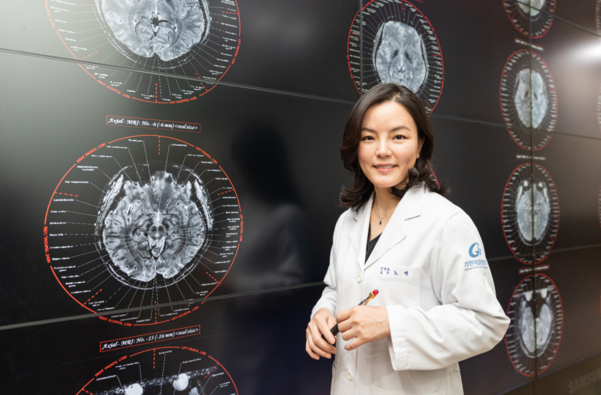Input 2021.01.25 11:26

Professor Roh Young’s team of neurology at Gachon University Gil Hospital announced on the 25th that through a joint research with Huron,’Veuron-Brain-pAb’, a software that automatically quantifies beta amyloid PET, has obtained US FDA approval on the 15th.
Alzheimer’s disease, which accounts for 75% of dementia, is caused by increased production of beta amyloid protein and decreased excretion. This protein is deposited and destroys nerve cells.
This product was previously approved by the Korea Food and Drug Administration (KFDA) in July. After about 6 months, it was approved by the US FDA as the first software in Korea and was recognized worldwide for its excellence.
In October 2015, Professor Roh Young’s team at Gil Hospital started the first domestic flutemetamol (F-18 Flutemetamol, FLUTE) PET test for clinical research. Based on this, it is a feature of this technology to automatically calculate the standard intake coefficient (SUVR) that quantifies an individual’s PET image. It combines MRI images to provide accurate brain location information. It is expected that the beta amyloid area can be automatically analyzed using artificial intelligence, and used for new dementia diagnosis and clinical research.
The number of patients with dementia worldwide is on the rise. In Korea, 1 out of 10 elderly people 65 years of age or older is affected. The number of domestic patients is expected to exceed 1 million in 2024 and 2 million in 2039. However, the development of technology to accurately diagnose and treat it is still experiencing difficulties.
To date, since PET brain imaging tests use visual-based scales without objective indicators, they have had to rely on the diagnostic accuracy of highly trained assessors.
Quantitative analysis is required for accurate objective analysis, but not only requires the use of various and complex image analysis software to quantitatively analyze PET images, but also includes a process of manually dividing anatomical structures, requiring experts skilled in such pre-processing and analysis. It requires a lot of time and effort.
Prof. Noh Young said, “Huron’s’Veuron-Brain-pAb’ easily and automatically quantifies the beta amyloid protein and provides it to medical professionals and researchers.” It is expected to be used in clinical research.”
Starting with this amyloid PET, Professor Roh is planning to expand to software that quantitatively analyzes PET necessary for diagnosis of various brain diseases such as tau PET, glucose PET, and dopamine PET through joint research with Huron.
This technology was based on research in support of research-centered hospital nurturing R&D projects supported by the Ministry of Health and Welfare and the Korea Institute for Health Industry Promotion, and was commercialized through joint research with Huron, a medical artificial intelligence solution company (CEO: Professor Donghun Shin, Gil Hospital of Gachon University) . Based on FDA approval, it is about to enter the world’s largest medical market, the United States. The researchers are preparing to make the software available to US medical institutions through startup Huron.
CEO Shin Dong-hoon said, “Through the FDA approval through Huron, we are preparing to enter the US. We will make it optimally used in diagnosis and clinical research to reduce the progression and complications of dementia.” Through cooperation, we will increase the success rate of new drug development.”
